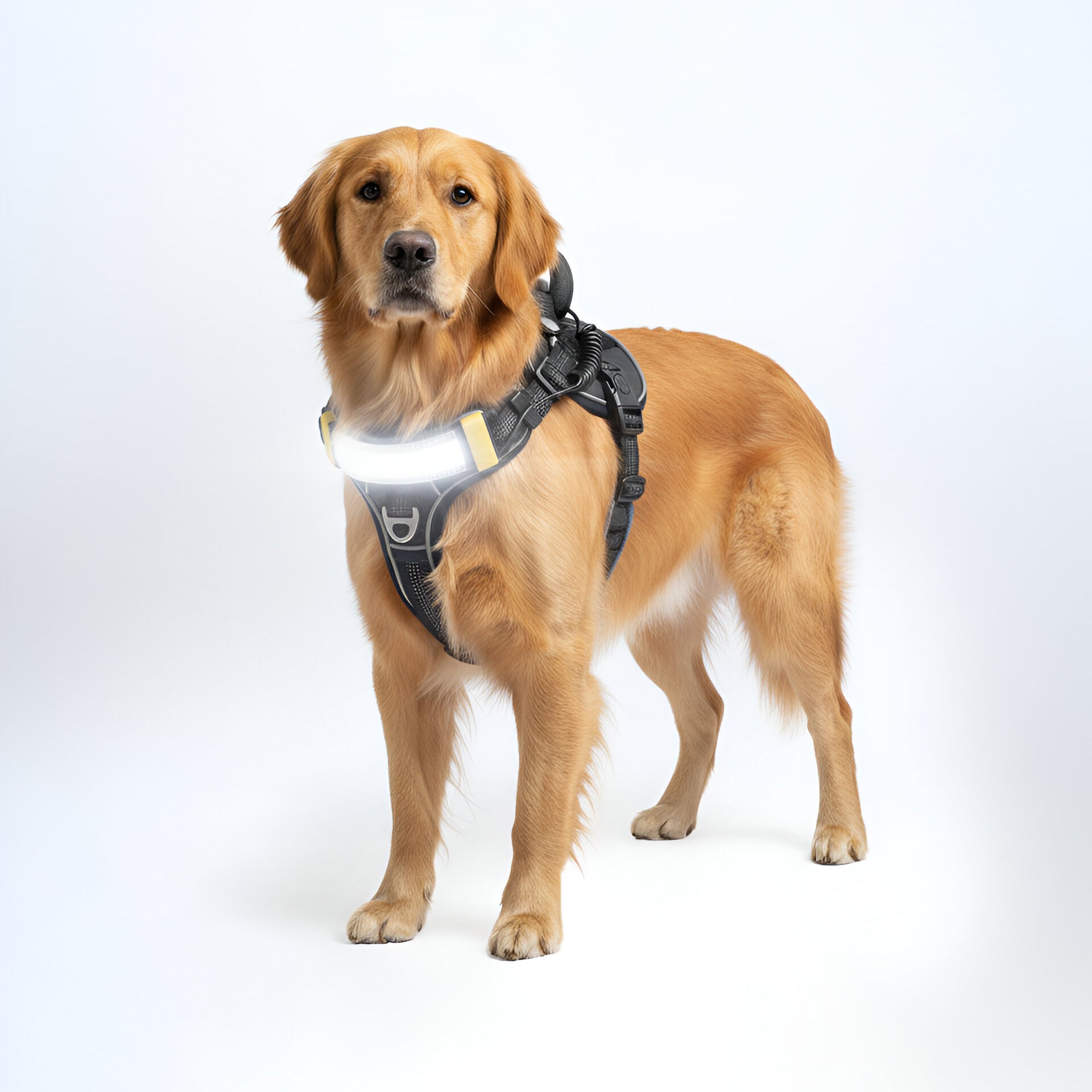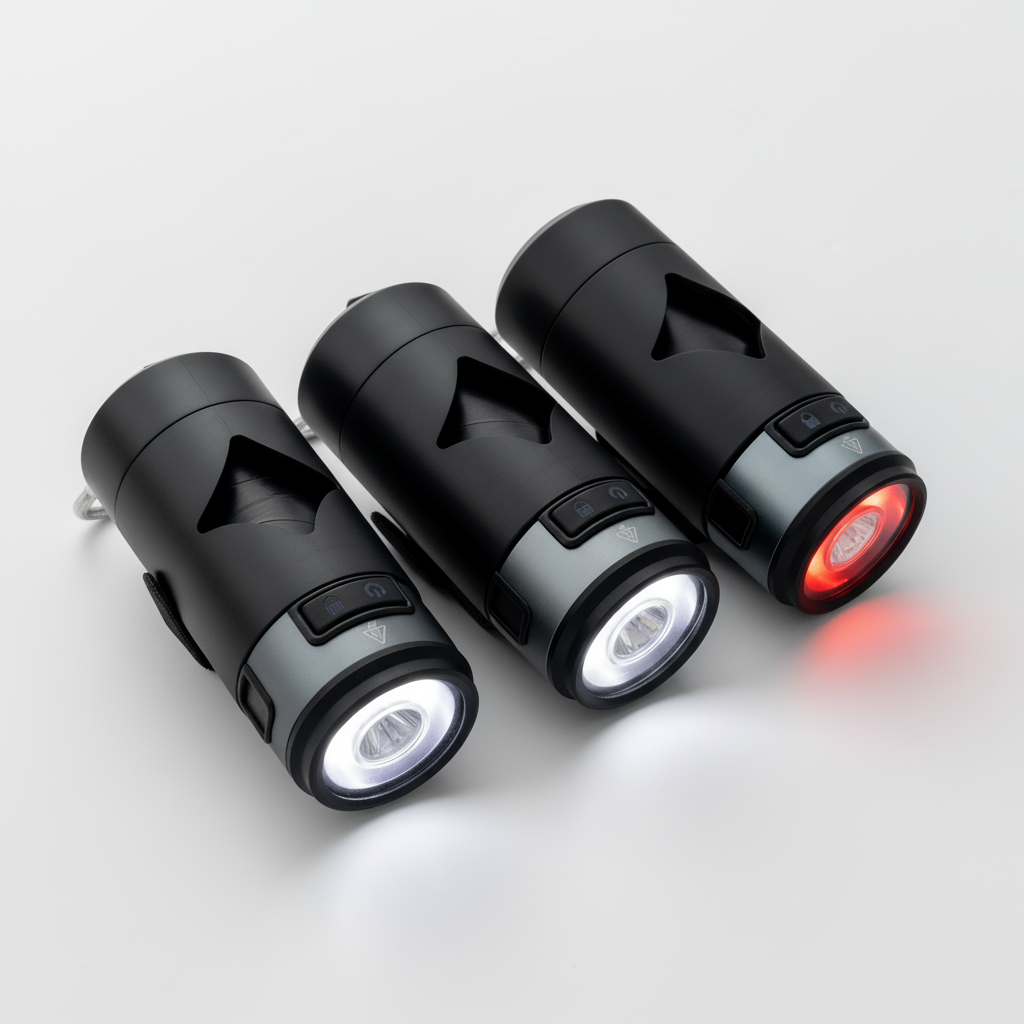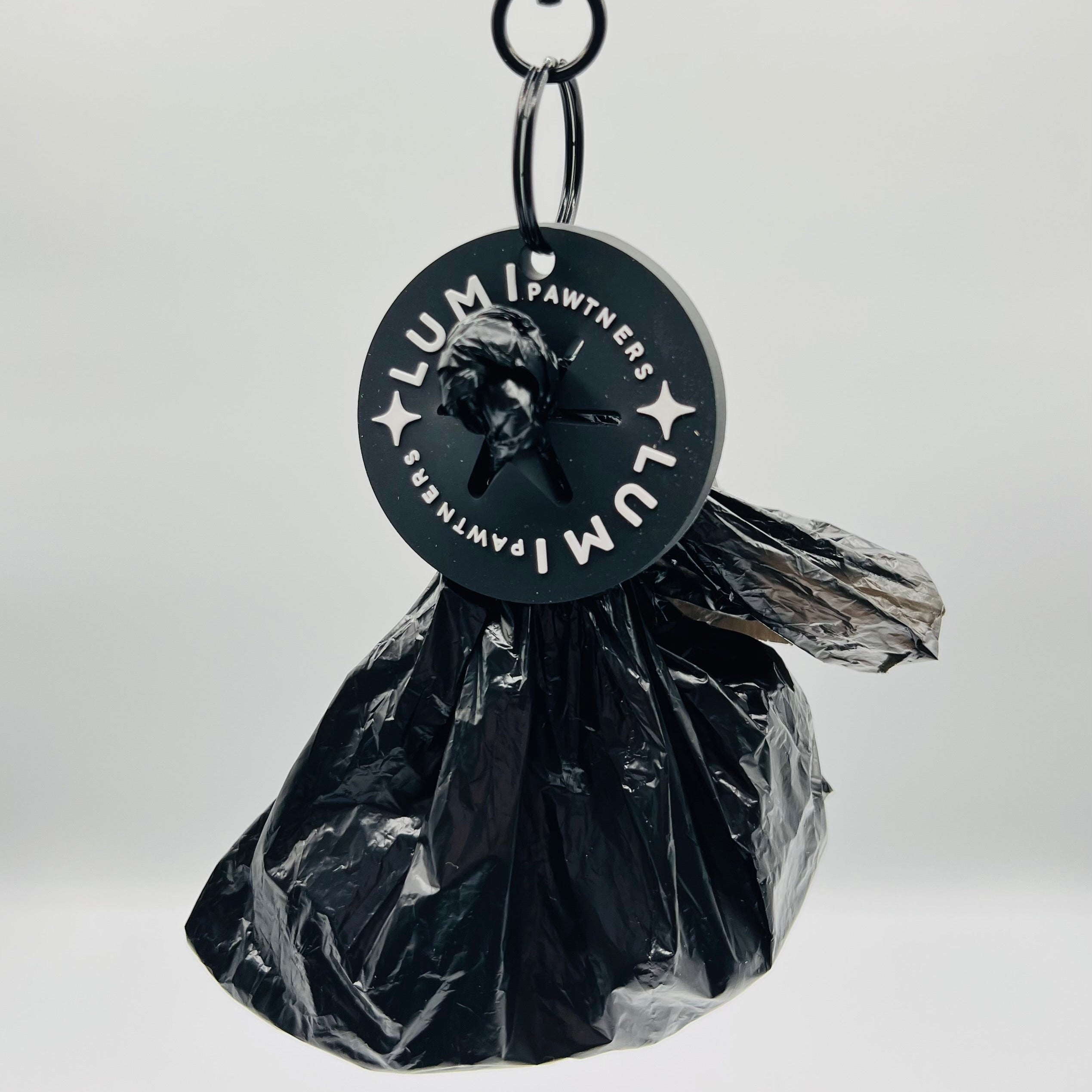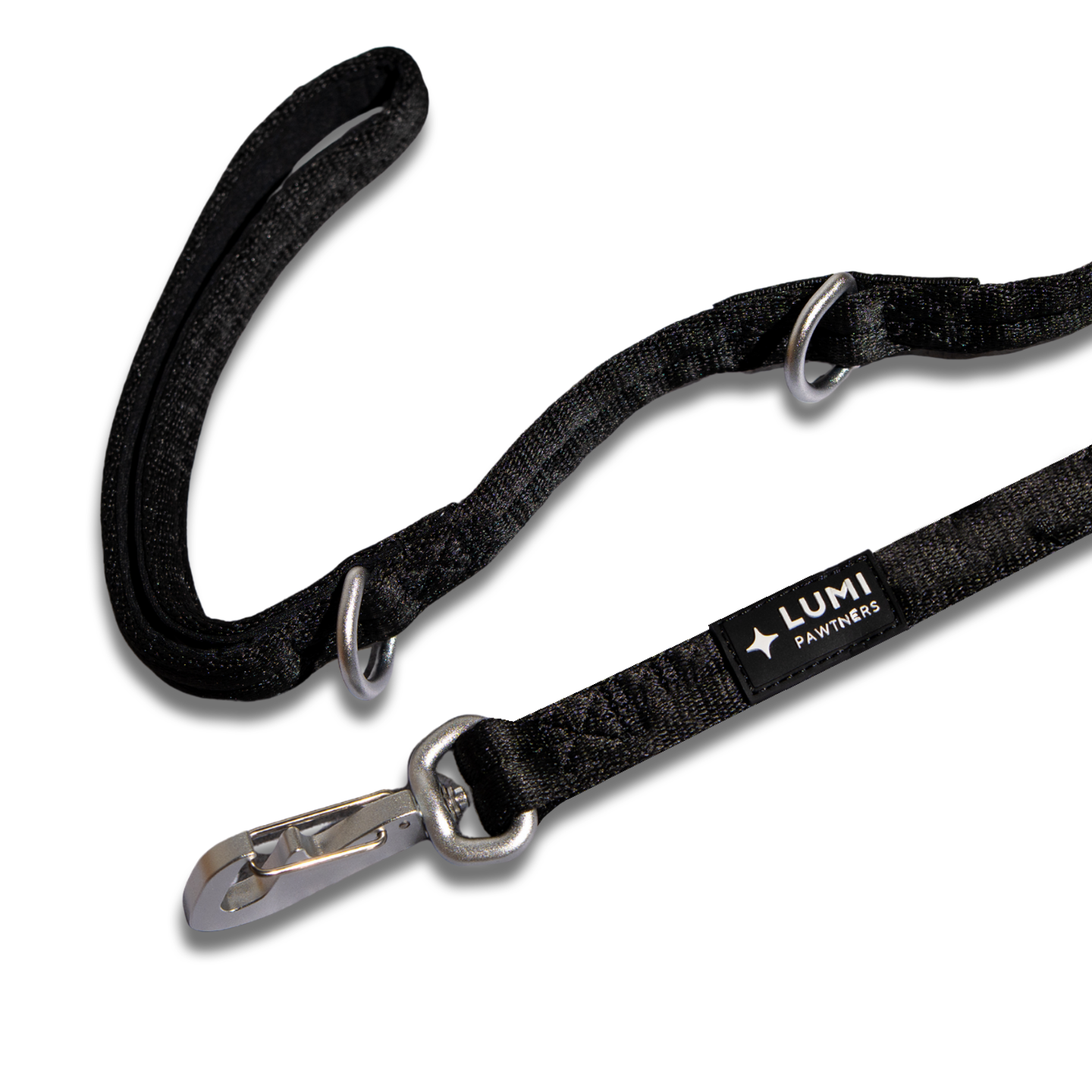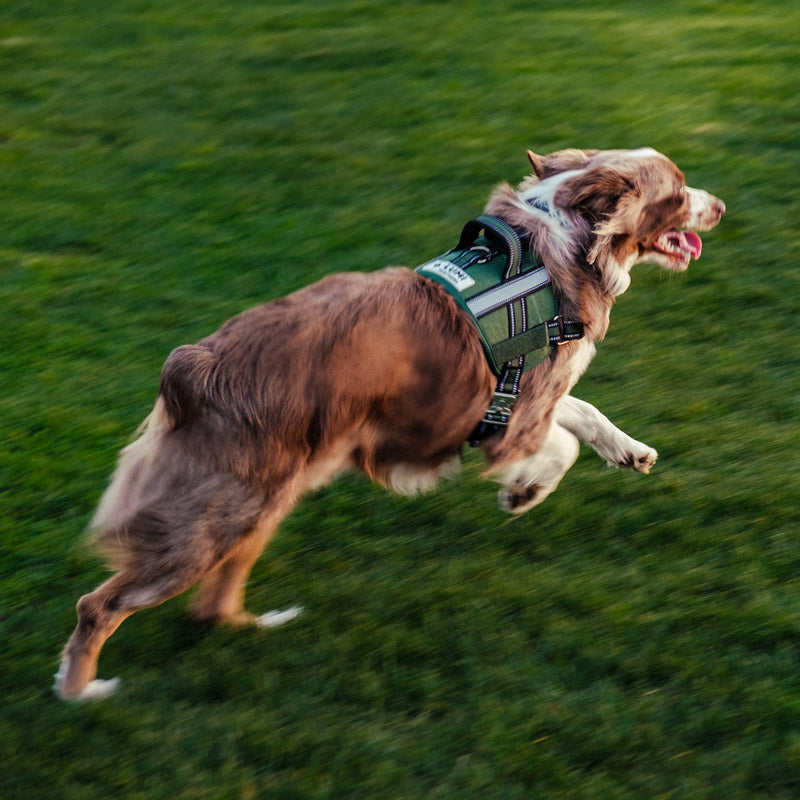Picture this: You're walking your dog down the street when suddenly—SQUIRREL! Your pup lunges forward, the leash goes taut, and you hear that awful gagging sound as their collar digs into their throat. Sound familiar?
If you've ever wondered whether you should switch from a collar to a harness (or vice versa), you're not alone. It's one of the most common questions dog owners ask, and honestly? The answer isn't always straightforward.
Here's the thing: both harnesses and collars have their place in your dog's life. But choosing the wrong one for walks can lead to everything from minor discomfort to actual health issues. Let's break down what you need to know to make the best choice for your four-legged friend.
Why This Decision Actually Matters
We get it—there are approximately one million decisions to make as a dog parent, and choosing between a harness and collar might seem like a minor one. But according to the American Veterinary Medical Association, proper restraint equipment is essential for your dog's safety and well-being.
Think about what happens when your dog pulls against their collar. All that force concentrates on a very small area, their neck and throat. For dogs that pull regularly (looking at you, Husky owners), this creates repeated trauma to some pretty delicate structures.
Recent research has shown that collar pressure can increase intraocular pressure in dogs, potentially contributing to eye problems, particularly in breeds already prone to eye issues. The trachea, thyroid gland, esophagus, and even the spine can be affected by chronic pulling against a collar.
A harness distributes that same pulling force across your dog's chest and shoulders, a much sturdier part of their anatomy. It's similar to how a seatbelt spreads impact across your body rather than concentrating it in one spot.
The Real Talk on Dog Collars
Let's start with collars, because most of us default to them. They're simple, they're what we've always used, and honestly, they're perfectly fine for many dogs.
When Collars Work Great
Got a dog who walks like they're strolling through a garden, stopping to smell the roses without pulling? A collar is probably all you need. Collars are:
- Lightweight and unobtrusive for everyday wear
- Perfect for holding ID tags (which, by the way, your dog should be wearing 24/7, even if they're microchipped)
- Easy on, easy off for quick bathroom breaks
- Great for well-trained dogs that respond to gentle leash guidance
When Dog Collars Become a Problem
But here's where things get dicey. Small breeds like Chihuahuas, Yorkshire Terriers, and Pomeranians are particularly vulnerable to something called tracheal collapse. Cornell University's College of Veterinary Medicine notes that tracheal collapse is common in toy and small breed dogs, and lifestyle adjustments like switching from neck collars to harnesses are crucial management strategies.
And it's not just small dogs. Brachycephalic breeds (the adorable flat-faced squad...Pugs, French Bulldogs, Boston Terriers) already struggle with breathing. A collar putting any pressure on their already-compromised airways? That's a recipe for respiratory distress.
Then there are the pullers. If your dog treats every walk like they're mushing through the Iditarod, a collar creates a dangerous cycle: they pull, it hurts, they get excited or anxious, they pull more. Not fun for anyone.
Different Collar Types: A Quick Tour
Flat Collars: Your standard everyday collar. Great for holding tags, fine for calm walkers.
Martingale Collars: These tighten slightly when pulled (but don't choke) and are popular with sighthounds like Greyhounds who can slip out of regular collars due to their narrow heads.
Choke Chains and Prong Collars: We're just going to say it, most modern dog trainers and veterinary behaviorists have moved away from these. VCA Animal Hospitals notes that the use of confrontational training methods that rely on punishment or physical force is not supported by the American College of Veterinary Behaviorists. There are better ways to train your dog.
Why Dog Harnesses Are Having a Moment
Walk into any dog park these days, and you'll see harnesses everywhere. And there's a good reason for that—the dog harness market has exploded in recent years. According to market research data, more than 61% of dog owners globally now favor harnesses over collars to prevent neck injuries and ensure better control during walks, with the market expected to grow at a compound annual growth rate of 12.55% through 2031.

The Dog Harness Advantage
A properly fitted harness is like the difference between carrying a heavy backpack with padded straps versus carrying it by a single thin handle. The weight distribution just makes sense.
Here's what harnesses do well:
They protect vulnerable structures. No pressure on the trachea, throat, or neck means less risk of injury. This is huge for puppies whose bodies are still developing, senior dogs with arthritis, and any dog recovering from neck or spine issues.
They give you better control. Especially with front-clip harnesses, you can redirect your dog's movement more effectively than yanking on a collar ever could. When your dog pulls forward, a front-clip harness turns them back toward you—it's basic physics, and it works.
They're safer for pullers while you train. Let's be real: training takes time. While you're working on loose-leash walking skills, a harness ensures your dog isn't damaging their throat every single walk.
The Harness Learning Curve
That said, harnesses aren't perfect for everyone. Some dogs absolutely hate having them put on—all those straps and buckles can feel overwhelming at first. And yes, they're bulkier than collars.
You also need to ensure proper fit. A harness that's too loose becomes an escape artist's dream, while one that's too tight can chafe or restrict movement. The general rule? You should be able to fit two fingers comfortably between the harness and your dog's body.
So... Dog Harness or Collar?
Here's our honest take: most dogs will benefit from having both.
You might want a harness if your dog:
- Pulls on the leash (basically 80% of dogs)
- Is a small or toy breed
- Has a flat face (brachycephalic breeds)
- Has any respiratory, neck, or spine issues
- Is a puppy still learning leash manners
- Gets over-excited on walks and tends to lunge
A collar alone might work if your dog:
- Walks calmly without pulling
- Is medium to large breed with no respiratory issues
- Is already well-trained on leash manners
- Responds quickly to gentle leash cues
The Best of Both Worlds
Here's what many dog owners do (and what we recommend): Keep a flat collar on your dog 24/7 with ID tags attached, but use a harness for walks. This way, your dog is always identifiable, but their neck and throat are protected during the most high-risk activity, walking on a leash.
Think of it like wearing both a belt and suspenders. Redundant? Maybe. But your pants definitely aren't falling down.
A Few Final Thoughts
Whether you choose a harness, a collar, or both, remember that the gear is only part of the equation. Training your dog to walk politely on a leash makes life better regardless of what equipment you're using.
And please, if you're struggling with leash manners, consider working with a positive reinforcement trainer. The American Veterinary Society of Animal Behavior emphasizes that reward-based training methods are the most effective and safest approach for all aspects of dog training and behavior modification. Your dog (and your shoulder) will thank you.
At the end of the day, the best choice is whatever keeps your dog safe, comfortable, and happy on your adventures together. Because that's what walks are really about—spending quality time with your best friend, whether they're strutting along calmly or enthusiastically investigating every single blade of grass.
Quick FAQ
Will a harness stop my dog from pulling?
Not automatically, no. A harness (especially a front-clip style) makes pulling less effective and more manageable, but it's not a magic fix. You'll still need to work on training for loose-leash walking.
Can I leave a harness on all the time like a collar?
Most veterinarians recommend removing harnesses when your dog is unsupervised, as they can get caught on things or cause chafing with prolonged wear. Reserve the harness for walks and activities.
My dog hates when I put their harness on. Any tips?
Start slowly! Let them investigate the harness, give treats when they show interest, and practice putting it on for just a few seconds before removing it and giving more treats. Make it a positive experience, and they'll get used to it. Some dogs also prefer step-in harnesses over overhead styles.
What about for car safety?
That's actually a separate question. For car travel, you'll want a crash-tested car harness or a secured crate—regular walking harnesses aren't designed for vehicle safety. The AVMA recommends using appropriate safety harnesses or crates that work with your vehicle's seat belt system.
Do I still need a collar if I use a harness?
Yes! Your dog should wear a collar with ID tags at all times, even if you use a harness for walks. If your dog ever gets loose, that collar and tag might be the only way someone can reunite you.
